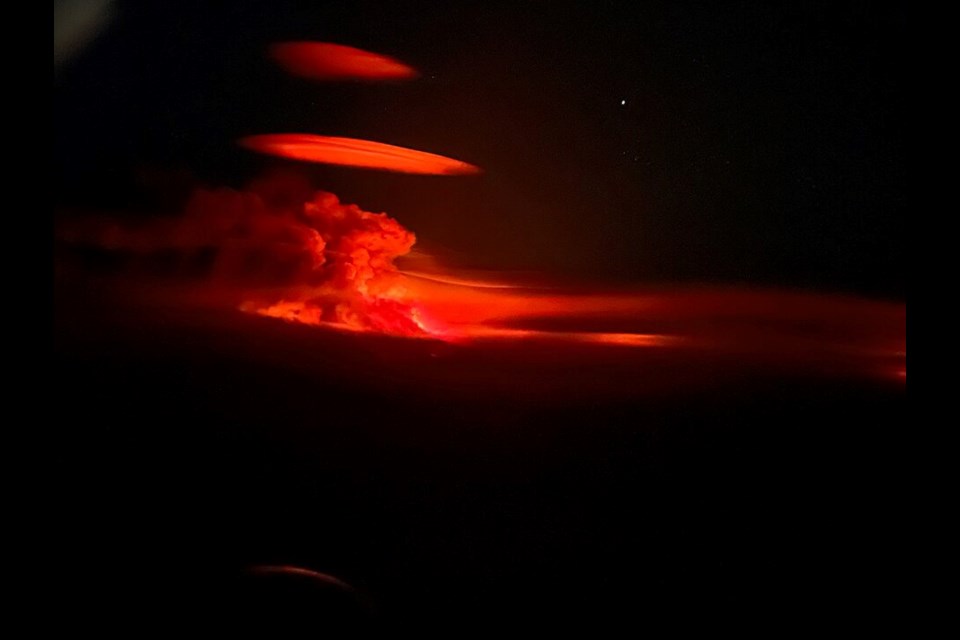Last year was Canada’s most destructive wildfire season ever, with a confluence of drought, extreme fire weather and dry forest fuels combining to burn about 150,000 square kilometres of land — an area roughly half the size of Italy.
But while more than 40 per cent of the 6,700 wildfires started in Canada in 2023 were ignited by people, carelessness and arson were far from the leading cause of forest destruction, according to a study carried out by 17 federal and university research scientists.
While accounting for 59 per cent of ignitions, lightning-caused wildfires led to about 90 per cent of the area burned across the country last year, the study found.
“Everything was kind of off the charts,” said Mike Flannigan, one of the study's co-authors and a wildfire researcher from Thomson Rivers University. “That’s four to five per cent of [Canada’s] forest burned.”
Piyush Jain, the study’s lead author and a researcher with the Canadian Forest Service, said lightning-caused fires tended to spark the biggest fires and burn in areas where fire crews typically struggle to put out or even control fires.
Canadian 'fire clouds' demolish global record
Canada’s fires were so big, intense and widespread last year they created their own weather in the form of pyro-cumulonimbus, or 'fire clouds.' These clouds form when hot air rises from an intense fire. When the air reaches high enough into the atmosphere, it cools to form clouds. Sometimes those clouds can extinguish the fire below; but they can also create more lightning in a vicious feedback loop that ignites more fires.
In 2023, roughly 140 pyro-cumulonimbus storm clouds were logged across the Canada, the study said.
“The previous global record was 100. The Canadian record was 50,” said Flannigan. “It was extremes. It's just all the ingredients came together. But they were so widespread geographically and temporally, that that was really surprising.”
Level of 2023 wildfire destruction on par with future predictions
Ignitions are just one of three ingredients that lead to a big fire season. The study found drought conditions dried out fuel and enabled “extreme fire danger over much of the country.”
Then there was the weather. A series of large scale “blocking” high-pressure systems led to sustained hot weather across much of Canada, starting in the spring and running into the fall in many locations.
That’s on top of the long-term warming brought on from human-caused climate change. Since 1948, Canada’s climate has warmed twice the global rate, with average temperatures increasing 1.7 degrees Celsius, the study found.
At a national level, the annual area burned in the country has been climbing since the 1950s. The study found that “while 2023 was unique in both magnitude and character, scientists and managers have long anticipated the growing potential for increased fire activity.”
Under the higher emissions climate scenario, Jain said he and his colleagues predicted Canada would see an annual area burned seven times the historic average by the end of the century.
“It’s probably just a coincidence, but that’s the same seven times that we saw in 2023,” Jain said.
In B.C., Flannigan added that more forest burned between 2017 to 2023 than in the previous 58 years.
“Weather is the big driver, and with climate change, it's becoming an even bigger driver,” Flannigan said.
“Ignitions are important. Don't get me wrong. The timing of ignitions is really quite important. But the difference between 2020 and 2023, in terms of area burned, is [up by] a factor of 200. And the number of ignitions didn't change much. We had a little bit more in 2023 than we did in 2020. And the fuels are basically the same.
“So why is there 200-fold difference? It's the weather.”
The research is in its pre-print form, meaning it has yet to be peer-reviewed.




